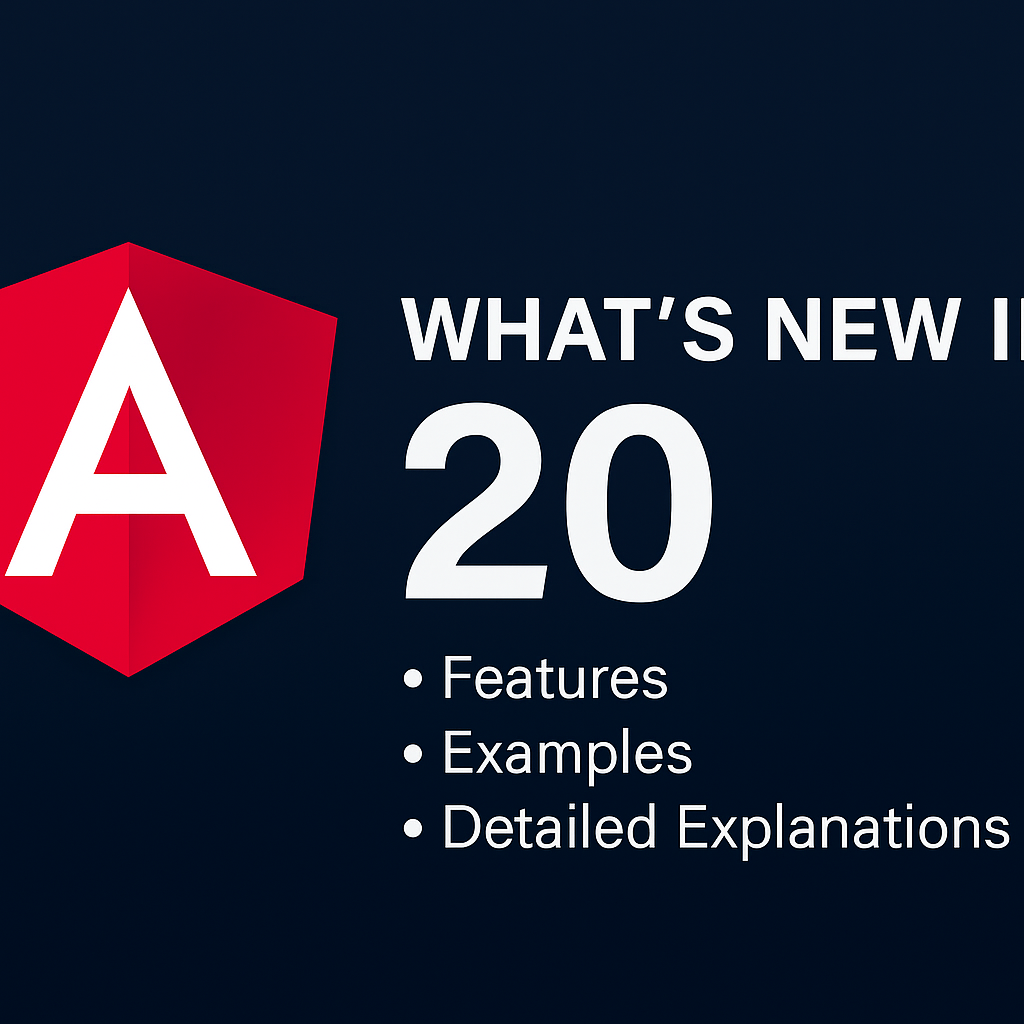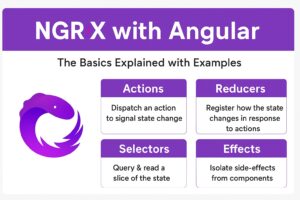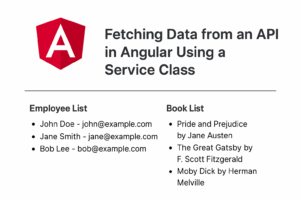Angular 20 (released in 2025) brings impressive improvements across performance, developer experience, and modern tooling support. In this guide, we’ll walk through:
- Major features in Angular
- Practical examples
- Migration notes (if needed)
- Code samples using new APIs
1. Built-In Signals API (Stable)
Angular 20 finalizes and stabilizes its reactivity model using Signals (previously in developer preview). This makes Angular’s state handling more reactive and composable, similar to SolidJS or Vue.
Example: Using Signals
// counter.component.ts
import { Component, signal } from '@angular/core';
@Component({
selector: 'app-counter',
standalone: true,
template: `
<h2>Counter: {{ count() }}</h2>
<button (click)="increment()">+</button>
`
})
export class CounterComponent {
count = signal(0);
increment() {
this.count.update(c => c + 1);
}
}
signal() returns a reactive value that can be subscribed to directly in templates — no need for RxJS.
2. Deferrable Views (Built-in Lazy Loading)
Deferrable views allow partial template rendering — delaying parts of a component until needed. Great for above-the-fold performance!
Example: Defer UI blocks until needed
<ng-container *ngIf="showProfile; else loading">
<user-profile></user-profile>
</ng-container>
<ng-template #loading>
<p>Loading profile...</p>
</ng-template>
Angular 20 lets you also use the @defer directive (RFC-based) — expected to mature soon into a first-class feature:
@defer {
<heavy-widget></heavy-widget>
}
3. Simplified Zone-less Mode with EventListeners
Angular 20 improves zone-less change detection, working natively with Signals and manual control.
Tip: Use NgZone.run() only when integrating legacy code.
This opens doors for faster and more predictable performance without the overhead of Zones.
4. Required Inputs & Strict Input Validation
Angular now supports required component inputs — making misuse harder and catching bugs earlier.
Example
@Component({
selector: 'user-card',
standalone: true,
template: `{{ <a href="http://user.name/" target="_blank" rel="noreferrer noopener">user.name</a> }}`
})
export class UserCardComponent {
@Input({ required: true }) user!: User;
}
If user input is missing, Angular will throw an error at runtime.
5. Improved Testing with provideHttpClient and TestBed
Testing setup has become lighter. Angular 20 simplifies mocking and testing with:
beforeEach(() => {
TestBed.configureTestingModule({
providers: [
provideHttpClient(withInterceptors([mockInterceptor]))
]
});
});
Also includes better support for standalone components in testing.
6. View Transitions API (Experimental)
Angular 20 lets you use the View Transitions API (native browser feature) for smooth route animations.
Example (in component):
import { triggerViewTransition } from '@angular/core';
onNavigate() {
triggerViewTransition(() => this.router.navigate(['/next']));
}
You can define native CSS for page transitions:
::view-transition-old(root),
::view-transition-new(root) {
animation: fade-in 0.4s ease-in-out;
}
7. ESBuild Support for Fast Builds
Angular CLI now officially supports ESBuild, enabling 10–30x faster rebuilds for local development.
To enable:
ng build --builder esbuild
Perfect for monorepos and large-scale apps.
8. Standalone API Everywhere
Standalone components are now default. No more NgModules unless you really want them.
Example:
bootstrapApplication(AppComponent, {
providers: [provideHttpClient()]
});
9. Improved Router with Typed Parameters
The router now supports typed route params and guards.
Example:
const routes: Routes = [
{
path: 'product/:id',
component: ProductPageComponent,
data: { type: 'number' }
}
];
This enables better IDE support and fewer bugs.
10. Deprecations and Breaking Changes
NgModulesare no longer recommended for new appsRendererAPI is now deprecated (use Renderer2)platformBrowserDynamichas moved internally
For full migration steps, run:
ng update @angular/core@20 @angular/cli@20
Summary: Angular 20 Feature Matrix
| Feature | Status | Benefit |
|---|---|---|
| Signals | Stable | Reactive, intuitive state |
| Deferrable views | Stable | Faster UI rendering |
| Zone-less detection | Stable | Better performance |
| Required Inputs | Stable | Fewer runtime errors |
| View Transitions | Experimental | Smooth route animations |
| ESBuild | Stable | Lightning-fast builds |
| Standalone APIs | Stable | Simpler architecture |
| Typed Router | Stable | Safer navigation |
Final Thoughts
Angular 20 represents a huge leap toward:
- Better DX
- Faster apps
- Simpler codebases
It’s a great time to migrate or start fresh with Angular!



